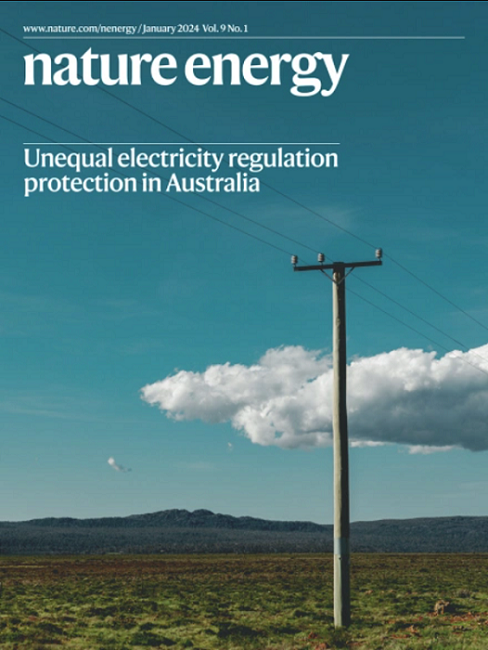可变性的影响
IF 60.1
1区 材料科学
Q1 ENERGY & FUELS
引用次数: 0
摘要
碱水电解是一种成熟的制氢技术,但与可再生能源的集成带来了挑战,可再生能源具有固有的可变输出:可再生动力的电解槽必须在功率波动的情况下有效运行,并且要耐受反复的启动和关闭。关闭的一个挑战是所谓的反向电流可以被诱导;在这种情况下,阳极和阴极的作用被有效地颠倒了。众所周知,这可能导致性能下降,但仍然需要更深入地了解其中的机制。现在,美国和丹麦的C. Buddie Mullins及其同事使用现场技术全面探索了变操作和模拟停机对碱性水电解槽中过渡金属基电催化剂稳定性的影响。研究人员发现,在模拟停机期间,电极催化剂严重退化,其程度在稳态运行期间没有观察到。例如,在反向电流条件下,原位表面增强拉曼光谱表明氧电极表面的强烈还原,这只是部分可逆的。此外,研究小组还观察到催化剂膜的厚度和组成的变化,以及在反向电流下催化剂载体的溶解和再氧化过程中催化剂的溶解。这项工作强调需要在实际动态测试条件下更具弹性的新材料,并需要开发考虑到可变操作的有效加速应力测试。本文章由计算机程序翻译,如有差异,请以英文原文为准。
The impact of variability
求助全文
通过发布文献求助,成功后即可免费获取论文全文。
去求助
来源期刊

Nature Energy
Energy-Energy Engineering and Power Technology
CiteScore
75.10
自引率
1.10%
发文量
193
期刊介绍:
Nature Energy is a monthly, online-only journal committed to showcasing the most impactful research on energy, covering everything from its generation and distribution to the societal implications of energy technologies and policies.
With a focus on exploring all facets of the ongoing energy discourse, Nature Energy delves into topics such as energy generation, storage, distribution, management, and the societal impacts of energy technologies and policies. Emphasizing studies that push the boundaries of knowledge and contribute to the development of next-generation solutions, the journal serves as a platform for the exchange of ideas among stakeholders at the forefront of the energy sector.
Maintaining the hallmark standards of the Nature brand, Nature Energy boasts a dedicated team of professional editors, a rigorous peer-review process, meticulous copy-editing and production, rapid publication times, and editorial independence.
In addition to original research articles, Nature Energy also publishes a range of content types, including Comments, Perspectives, Reviews, News & Views, Features, and Correspondence, covering a diverse array of disciplines relevant to the field of energy.
 求助内容:
求助内容: 应助结果提醒方式:
应助结果提醒方式:


